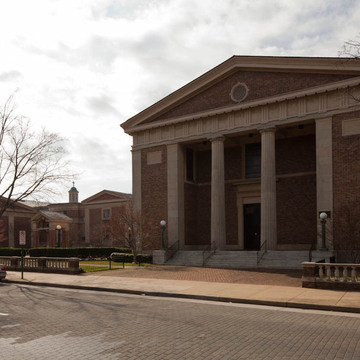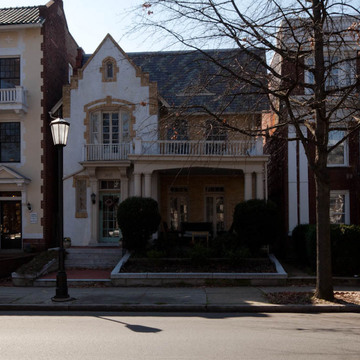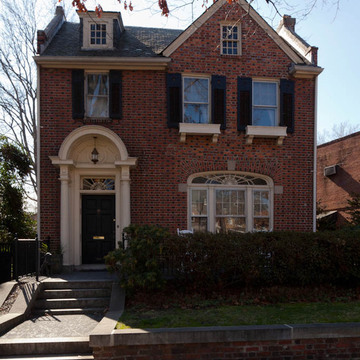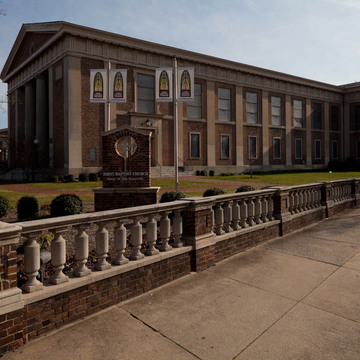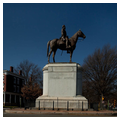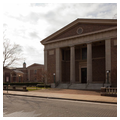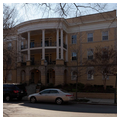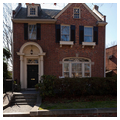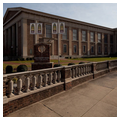The Stonewall Jackson Monument (1917–1919) was removed on July 1, 2020 during the summer of protests in support of racial justice and against white supremacy. The sculptor was F. William Sievers, who portrayed Jackson sitting tranquilly on his mount, rising above the busy modern scene below. The monument sits on a tight site at the intersection of what is now Arthur Ashe Boulevard and Monument Avenue. Squeezed by traffic on east and west, the sculpture faced north, reputedly because the old soldiers at the nearby home for Confederate veterans argued with the sculptor that Stonewall would never turn his back on a Yankee. Sievers, the sculptor, always regretted the orientation of the horse, which greeted much of the automobile traffic with its rump.
The southeast corner of Monument Avenue and Arthur Ashe Boulevard is dominated by the First Baptist Church (1927–1928, sanctuary, Herbert L. Cain with Joseph Hudnut, consulting architect; 1940–1941, sanctuary enlargement, W. Irving Dixon and Leonard Moore; 1948, east wing addition; 1996, infill) with its Doric distyle in antis portico. The existing complex was built piecemeal beginning in 1927, with care to break up the mass and to continue the architectural quality of the streetscape.
West of Ashe Boulevard, the character of Monument Avenue changes dramatically. The first two blocks are dominated by apartment buildings much larger than those to the east. However, the landscaped median provides continuity, and mature trees help mask the scale of the buildings. The repetitive porches of the large apartment buildings contribute to the feeling of uniformity. Monument Avenue's apartment buildings were considered acceptable stylish alternatives for Richmond’s white professionals who chose not to own houses. Colonial Revival, Craftsman, Classical Revival, and Mediterranean Revival styles are all represented. Notable buildings include the Anne-Frances Apartments (1919–1920, Max Ruehrmund; 2805 Monument Avenue), the central porches of which form an elliptical bay over a rusticated arcade.
The south side of the 3000 block owes much of its interest to Max Ruehrmund. The Richmond architect and builder designed the Halifax Apartments (1921, 3009 Monument Avenue), his own house, the Ruehrmund House (1920, 3007 Monument Avenue), and the Kass House (1921, 3015 Monument Avenue). The varied styles popular in Richmond during the 1920s are apparent in Ruehrmund's eclectic designs.


